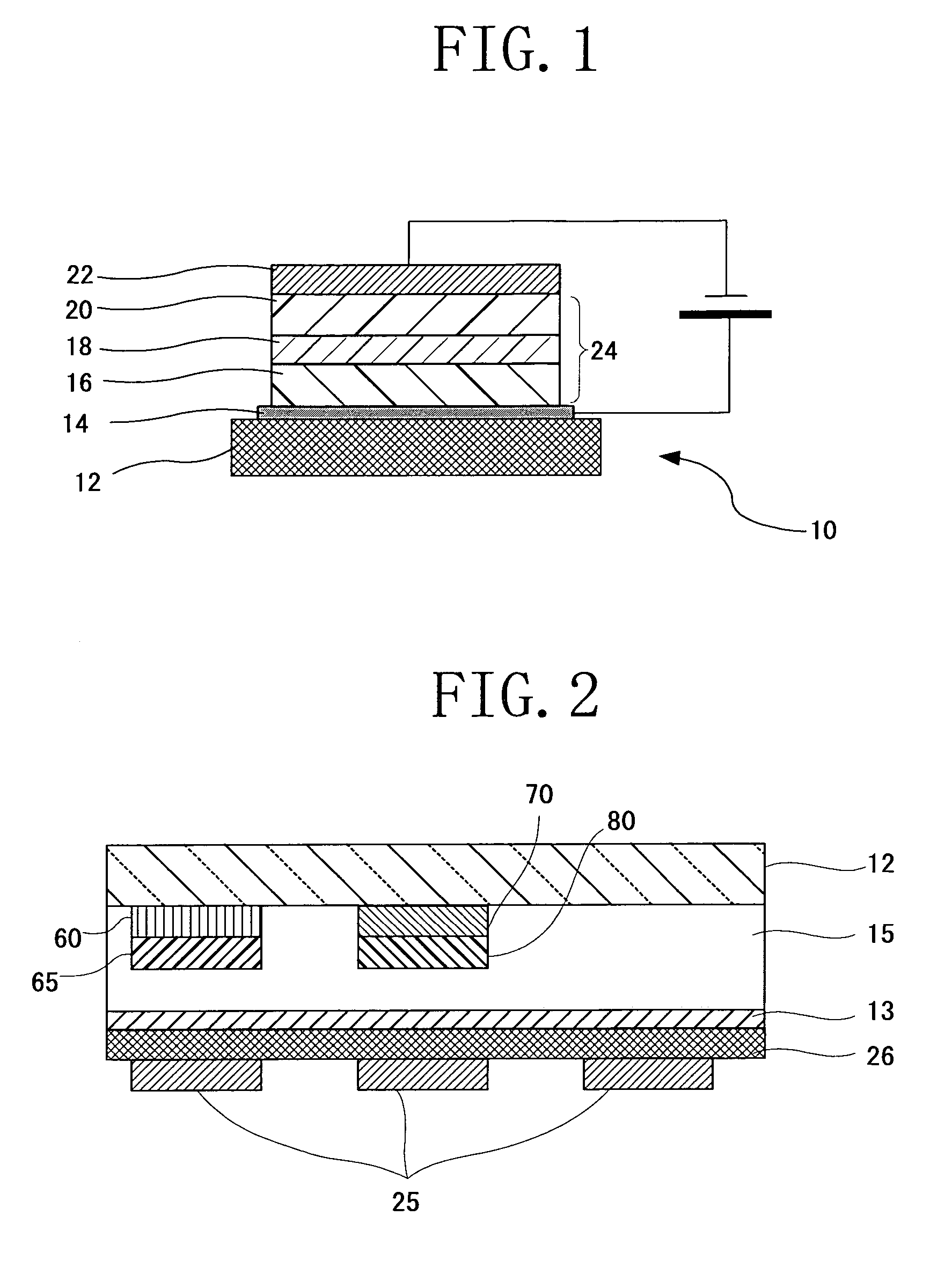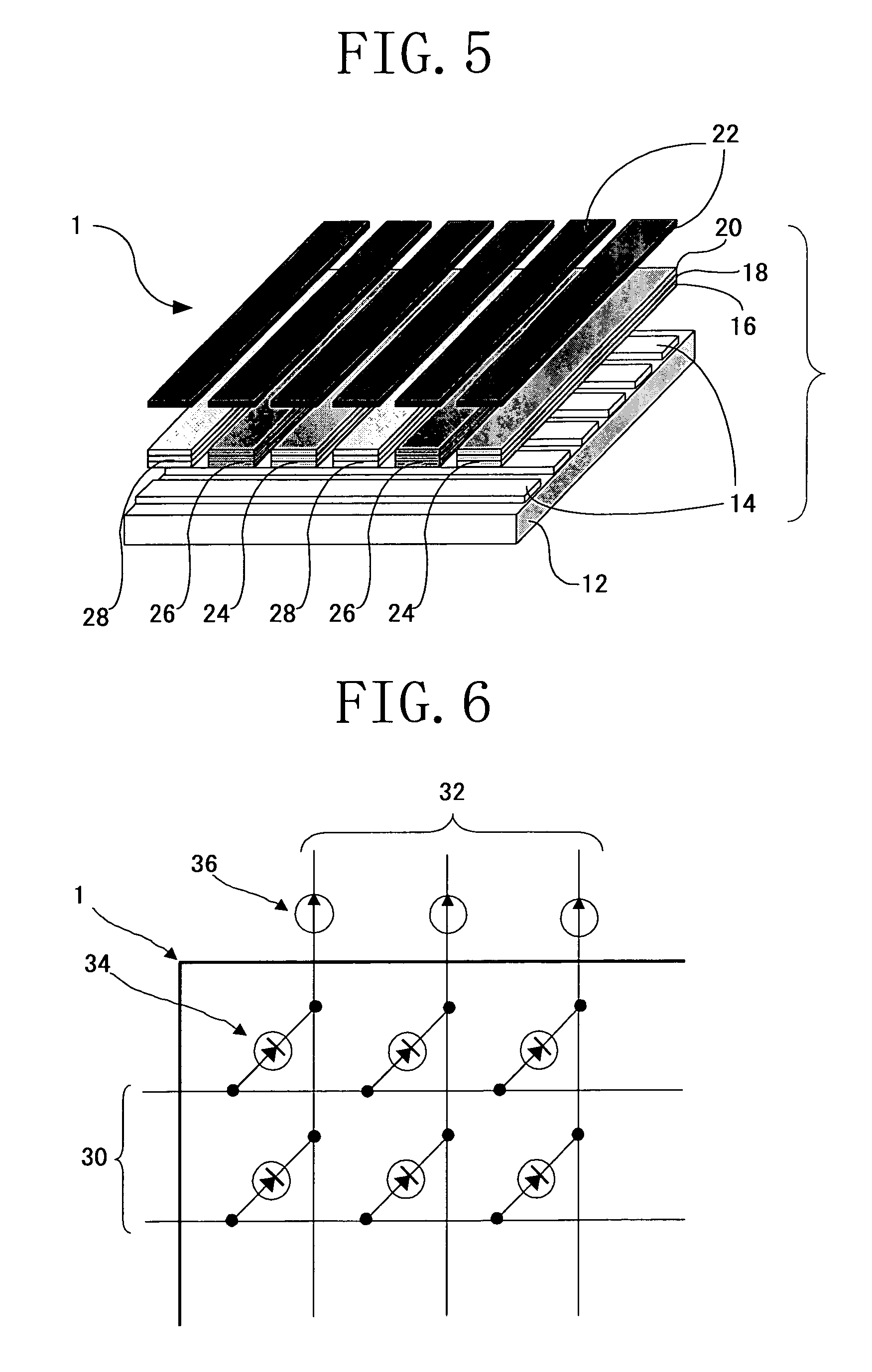Organometallic complex, luminescent solid, organic EL element and organic EL display
a technology complexes, applied in the direction of thermoelectric devices, discharge tubes luminescnet screens, group 5/15 element organic compounds, etc., can solve the problems of low light emission efficiency of organic el elements using this metal complex, insufficient phosphorescent efficiency at room temperature of this metal complex, and insufficient phosphorescent efficiency at room temperature. , to achieve the effect of excellent luminous efficiency, excellent luminous efficiency and excellent luminous efficiency
- Summary
- Abstract
- Description
- Claims
- Application Information
AI Technical Summary
Benefits of technology
Problems solved by technology
Method used
Image
Examples
synthetic example 1
Synthesis of Pt(isophthalidine-di(n-butylamine))chloride
[0203]Isophthalidine-di(n-butylamine)(the tridentate ligand) was synthesized as follows. Specifically, 2 equivalents of n-butylamine (146 mg; 2 mmol) were added to isophthalaldehyde (134 mg; 1 mmol) which was dissolved in absolute ethanol, and the mixture was refluxed for 3 hours. The obtained reaction liquid was cooled and concentrated. Then, the precipitated solid was separated by filtration and was recrystallized using methanol thereby to obtain 200 mg of isophthalidine-di(n-butylamine) of interest.
[0204]
[0205]Pt(isophthalidine-di(n-butylamine))chloride was synthesized as follows. Specifically, the obtained isophthalidine-di(n-butylamine) (24 mg; 0.1 mmol) was dissolved in a deaerated solution of acetic acid (10 ml), then 1 equivalent of K2PtCl4 (42 mg; 0.1 mmol) was added to this, and the mixture was refluxed for 3 days at 120° C. The mixture was cooled and filtered. The solid was washed well with methanol, water and dieth...
synthetic example 2
Synthesis of Pt(isophthalidine-dianiline)chloride
[0207]Isophthalidine-dianiline (the tridentate ligand) was synthesized as follows. Specifically, 2 equivalents of aniline (186 mg; 2 mmol) were added to isophthalaldehyde (134 mg; 1 mmol) which was dissolved in methanol, and the mixture was stirred for 3 hours. The obtained reaction liquid was concentrated. Then, the precipitated solid was separated by filtration and was recrystallized using methanol thereby to obtain 220 mg of isophthalidine-dianiline of interest.
[0208]
[0209]Pt(isophthalidine-dianiline)chloride was synthesized as follows. Specifically, the obtained isophthalidine-dianiline (28 mg; 0.1 mmol) was dissolved in a deaerated solution of acetic acid (10 ml), then 1 equivalent of K2PtCl4 (42 mg; 0.1 mmol) was added to this, and the mixture was refluxed for 3 days at 120° C. The mixture was cooled and filtered. The solid was washed well with methanol, water and diethyl ether, and was vacuum dried. The obtained raw powder was...
synthetic example 3
Synthesis of Pt(isophthalidine-di(p-anisole))chloride
[0211]Pt(isophthalidine-di(p-anisole))chloride (Compound3) expressed by the following structural formula (51) was obtained in the same way as in Synthetic Example 2, except that, in Synthetic Example 2, p-anisole was used instead of aniline.
[0212]
PUM
| Property | Measurement | Unit |
|---|---|---|
| internal quantum efficiency | aaaaa | aaaaa |
| internal quantum efficiency | aaaaa | aaaaa |
| thickness | aaaaa | aaaaa |
Abstract
Description
Claims
Application Information
 Login to View More
Login to View More - R&D
- Intellectual Property
- Life Sciences
- Materials
- Tech Scout
- Unparalleled Data Quality
- Higher Quality Content
- 60% Fewer Hallucinations
Browse by: Latest US Patents, China's latest patents, Technical Efficacy Thesaurus, Application Domain, Technology Topic, Popular Technical Reports.
© 2025 PatSnap. All rights reserved.Legal|Privacy policy|Modern Slavery Act Transparency Statement|Sitemap|About US| Contact US: help@patsnap.com



